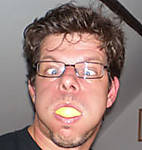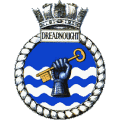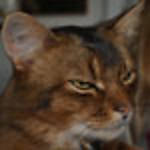Continued
Gentlemen,
I am having a pretty good swing and I am trying to stick to it. The missus (having resurfaced after that 5 hours opera) has a lot of prep work to do do in the evenings, so I am set free to further my project as I see fit (after having brought my boy to bed, of cause).
In between the shown steps of work on the base and frame, I was busy completing the paint job on the hull. Yesterday I had explained why I changed the “natural” order of paint application. The top section of the following picture shows the hull with applied and masked off dark grey portion. The center section shows the hull after having received the cover-up layer of primer and the Mittelgrau (medium grey) main hull color. Prior to the application of the medium grey, I had applied superstructure’s Hellgrau (light grey) and masked it off. I did not make a separate photo, as the Hellgrau is almost exactly the same color as the Mr. Gunze 1200 primer.
While it is still early in the evening I mask off the complete upper hull and apply the Schiffsbodenfarbe I Rot (ship bottom color 1 red) as the final step of the camo application. The result can be seen in the bottom portion of the picture.

Removing the tape would be the most exciting part of this evening, but the red coat must have fully dried before doing that (can’t wait!). So I turn my attention back to the construction of the base.
The roughly shaped and sanded frame planks get drilled with a 2 mm drill bit and receive wooden dowels to connect them. Prior to drilling I masked off the ends of the planks to avoid uncontrolled splintering. Good side effect is that the wood is protected from glue too. If glue touches your wood you should immediately wipe it off otherwise you will suffer problems staining your wood later.
I use simple toothpicks as dowels. I first connect opposing corners without using any glue. Then I connect these two “L’s” to shape the final frame. Here I am using Elmer’s. Just inject the glue into the drilled whole and knock in the toothpick and wipe away the excess glue.
Make sure that there is no glue on the inside of the frame before test fitting your sea bed.

Let the whole assembly sit for some 15-20 minutes and try to keep your hands off the still freshly painted hull while waiting!

The glue has not fully cured after 20 minutes, but the assembly is stabile enough to endure further proceedings. First I saw off the dowel ends. Then I use my Dremel tool smooth the whole assembly over.
Of cause you are free to choose the effect of wood to your liking. You may go for a pristine and new look while I am aiming for age-old, worn tropic wood: I want an antique-furniture-look to come with my model. As old furniture is usually a bit dinged and rarely has sharp corner, I “wear off” all sharp edges with my Dremel tool and craft imperfections into the wood surface. I even take a small drill bit and simulate wood worm holes. Just a few locally, not too many!
Of cause old furniture is at its best if grown dark by age. I sneak up to the missus desk, steal her inkpot and apply the deep black ink liberally onto the frame concentrating on the corners and creases. Before she knows it the inkpot is back in the place it is supposed to be. The ink is not even fully dry, but I start sanding off the ink-stained parts of the wood, which takes on a grayish appearance. Now the whole assembly needs sufficient drying time.

Somewhat more than 2 hours of drying time for the hull now… is that enough? I tell myself that it is enough, if I am careful enough not to touch the hull sides.
This is what it looked like last:

I am now carefully removing the tape praying for the colors and the eyelids to stay on. Did I get the sequences right? Do the stripes line up? Did I forget something …?

No I didn’t!





All turns out fine, even though the medium grey of the hull and the light grey of the superstructure look so similar that at first that I thought of a mistake, but indeed in changing light one can see the subtle difference in shades of grey. Actually it’s a little too subtle for my taste, but I will leave it as it is.
Of cause there are some spots that will need clean- and touch-up (see arrows), but this the usual work to be done at this stage.

I even had cared to paint the steel decks dark grey already so, if all runs well, I will attach the separate deck amidships permanently (hopefully) tonight.

After that the wood deck will lose its mask and I can apply an over all enamel clear coat for protection before proceeding any further.
Cheers,
Guido











































































